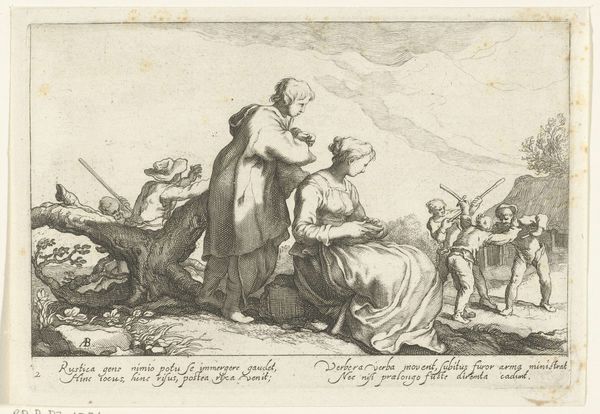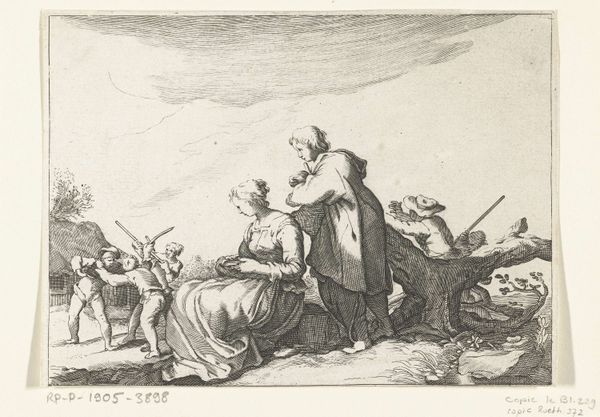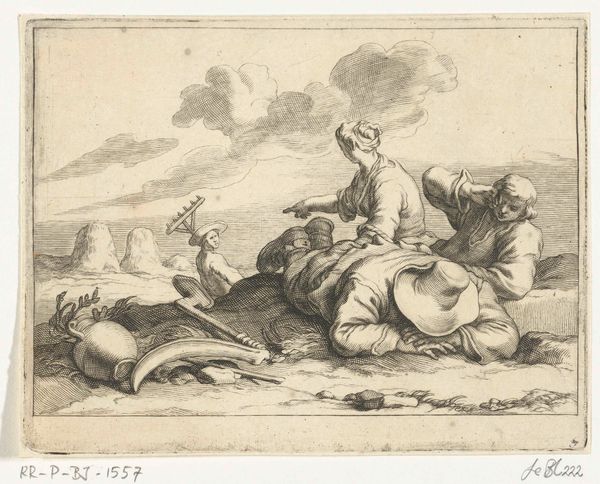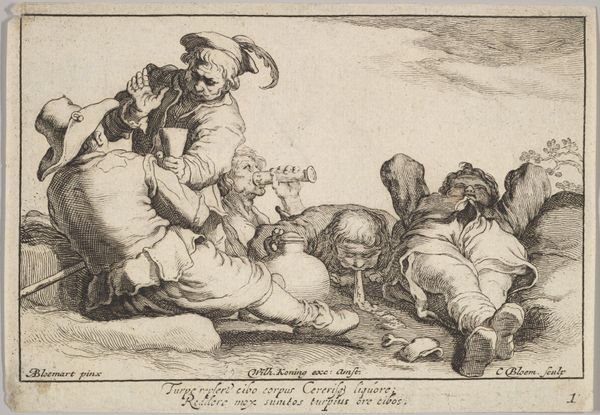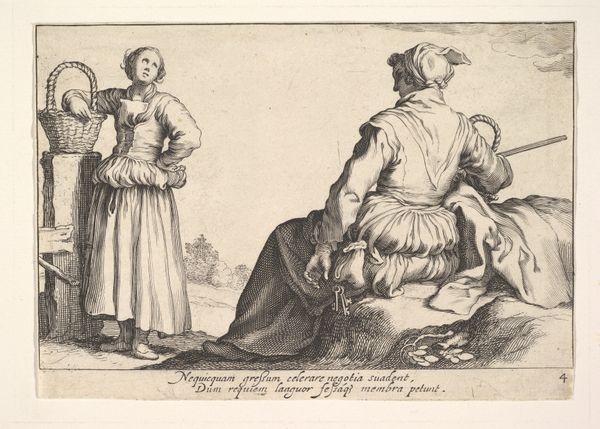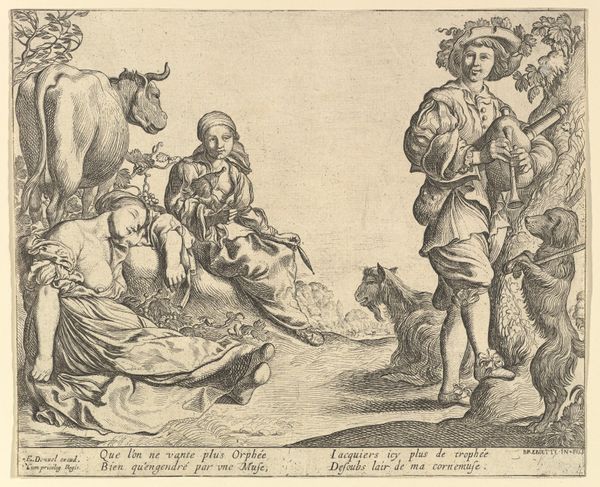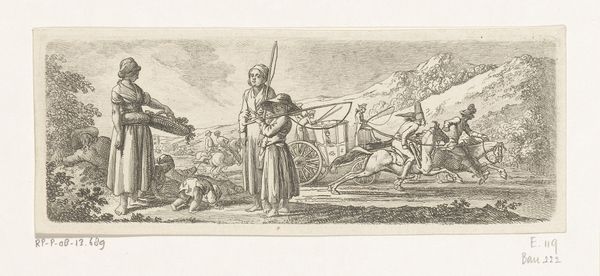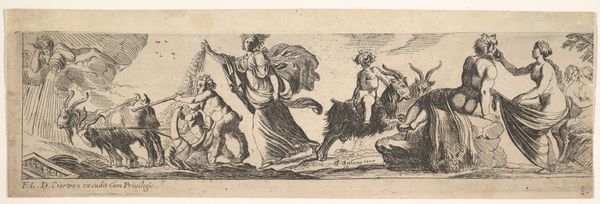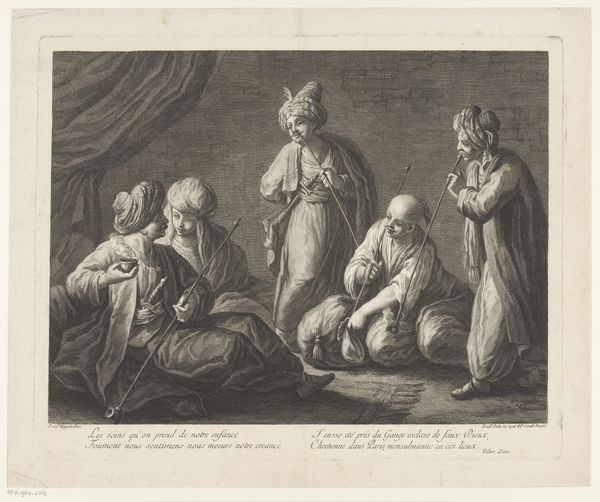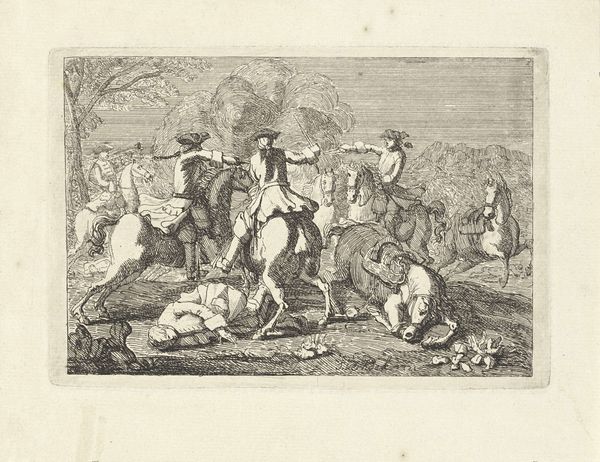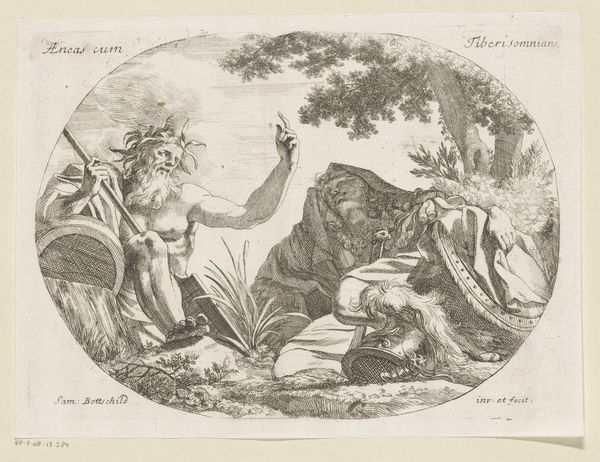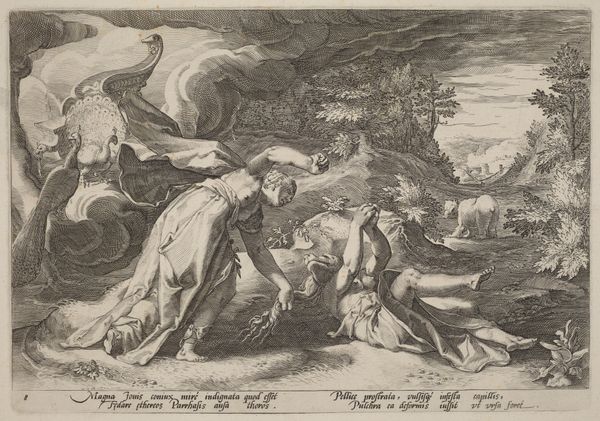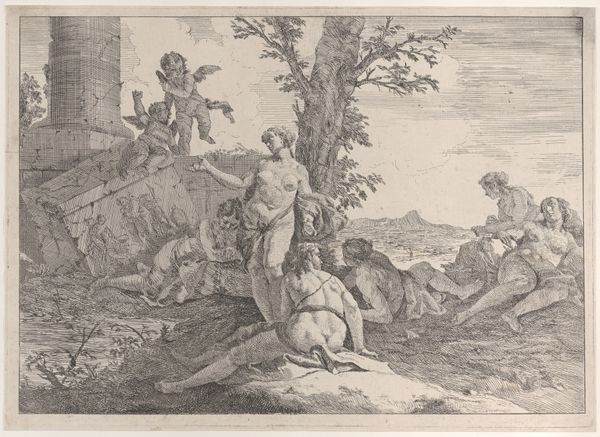
print, etching
#
portrait
#
baroque
# print
#
etching
#
landscape
#
genre-painting
Dimensions: height 133 mm, width 206 mm
Copyright: Rijks Museum: Open Domain
Cornelis Bloemaert etched this pastoral scene, titled "Herders," sometime in the 17th century, capturing shepherds in repose. The shepherdess, enjoying her meal with serene innocence, and the flock of sheep, are dominant visual symbols that take us back to the classical Arcadia. This motif of idyllic pastoral life, as reflected in Virgil’s "Eclogues," echoes through centuries, resurfacing in Renaissance paintings and later in 18th-century Rococo art. The shepherds embody a longing for a simpler, untainted existence, a dream of a golden age. However, this idealization is not static. The image of shepherds has evolved: consider the Christian symbolism, where the shepherd represents Christ, guiding his flock. Or in contrast, think of its adoption by political figures, portraying themselves as benevolent protectors of the people. This duality reveals a complex interplay between the longing for innocence and the assertion of power. There is an emotional depth to the image, an invitation to reflect on the dichotomy of our existence: the pull between the simple life and the enticements of complexity. This is the enduring power of symbols, which continue to resonate within our collective consciousness.
Comments
No comments
Be the first to comment and join the conversation on the ultimate creative platform.
